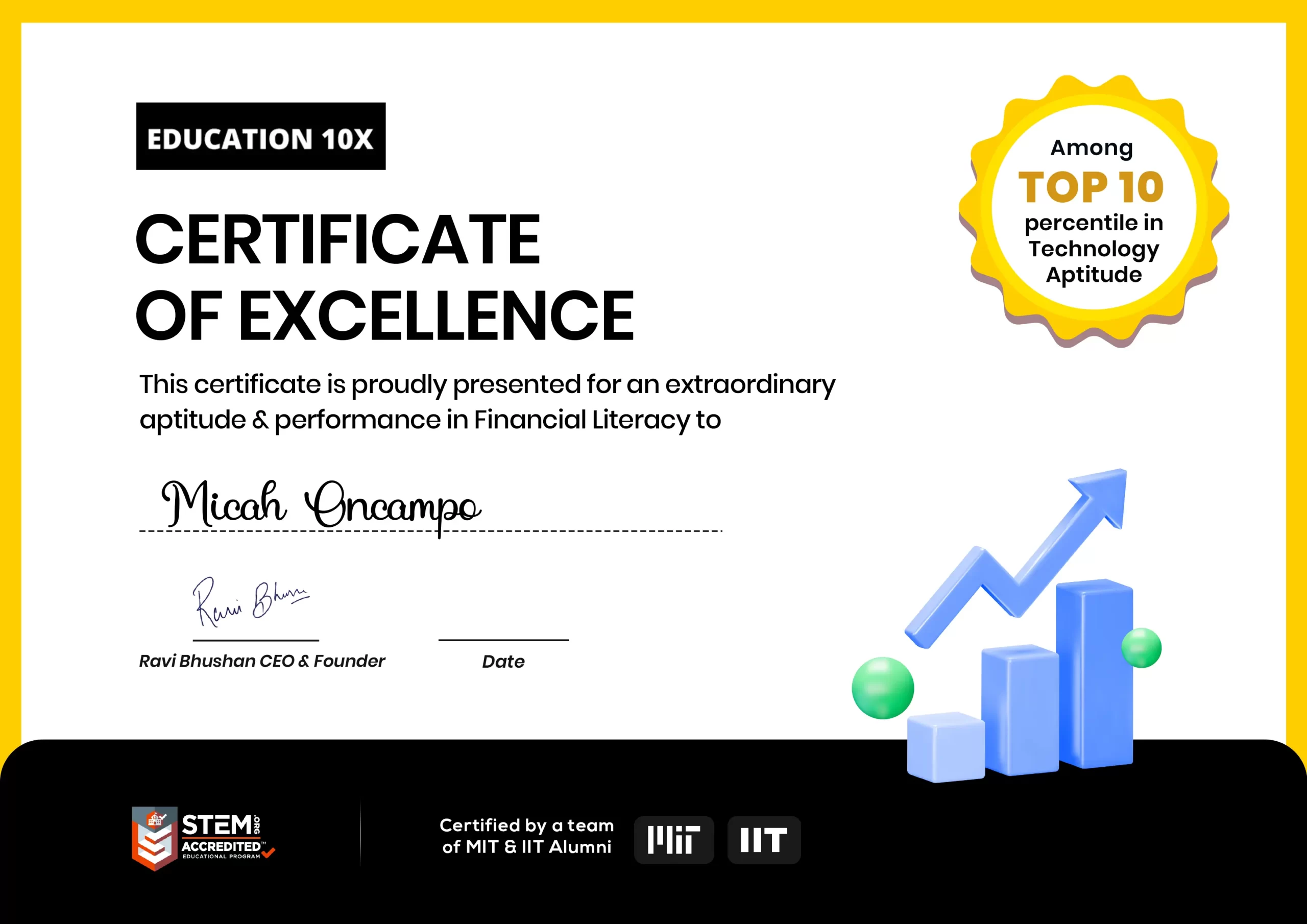In today’s fast-paced and ever-evolving world, teaching children about financial literacy and responsibility is crucial. As parents, it is our responsibility to equip our kids with the necessary skills to navigate the complex world of money management.
One effective tool that can aid in this process is a credit card for kids. In this ultimate guide, we will explore the benefits of introducing credit cards to children and provide valuable insights to help you choose the right one for your child.
Table of contents
Introduction
Teaching financial literacy and responsibility to children is of paramount importance for their future well-being and success. By instilling these skills early on, children develop a strong foundation for making informed financial decisions throughout their lives. Introducing credit cards as a tool for learning money management skills can further enhance their understanding of financial concepts.
Firstly, teaching financial literacy equips children with the knowledge and skills necessary to manage their finances effectively. It teaches them about budgeting, saving, and the importance of making informed spending choices. These skills promote responsible money management and help children avoid common financial pitfalls, such as debt and overspending.
Introducing credit cards as a learning tool provides practical experience in handling credit responsibly. Children can learn to understand the concept of credit, interest rates, and repayment terms. By starting with a prepaid or secured credit card, they can practice making purchases within their means and learn about the consequences of overspending or failing to make payments on time.
Overall, teaching financial literacy and responsibility to children is crucial for their long-term financial well-being. Introducing credit cards as a tool for learning money management skills can provide practical experience and empower children to make informed financial decisions, ensuring they have a solid foundation for their financial future.
Understanding Credit Cards for Kids
Credit cards can serve as practical tools to impart valuable money lessons for kids, fostering a sense of responsibility and accountability in their financial decisions. When incorporating financial education for kids through the use of suitable credit cards can pave the way for a solid understanding of money matters in the future. Credit cards designed specifically for children, often known as “youth credit cards” or “teen credit cards,” are financial products tailored o introduce young individuals to responsible money management. These cards come with specific features and benefits that aim to educate children about financial literacy while providing necessary controls for responsible card usage.
1. Features and Benefits
– Lower Credit Limits: Youth credit cards typically have lower credit limits, allowing children to start with a manageable spending amount.
– Parental Controls: These cards often offer robust parental controls, allowing parents to monitor and control their child’s spending. Parents can set spending limits, track transactions, and receive alerts about their child’s card activity.
– Financial Education Tools: Many youth credit cards offer educational resources and tools to teach children about money management, budgeting, and responsible credit card usage. These resources may include online modules, budgeting apps, or financial literacy guides.
– Prepaid or Secured Cards: Some youth credit cards operate as prepaid or secured cards, requiring a security deposit or funds to be loaded onto the card in advance. This setup helps children understand the concept of limited funds and the importance of budgeting.
– Rewards and Incentives: Certain youth credit cards offer rewards and incentives for responsible card usage, such as cashback on specific purchases or discounts at partnering retailers. These perks encourage positive financial habits.
2. Parental Controls and Limits
– Spending Limits: Parents can set daily, weekly, or monthly spending limits on their child’s credit card to ensure responsible usage and prevent excessive spending.
– Transaction Notifications: Parents can receive real-time notifications about their child’s transactions, enabling them to stay informed about their spending habits and intervene if necessary.
– Merchant Restrictions: Parental controls allow parents to restrict certain merchant categories, such as online gaming or adult content, to ensure their child’s spending aligns with their values and priorities.
– Transaction Monitoring: Parents can review their child’s transaction history and discuss any questionable or unauthorized purchases, providing guidance and teaching valuable lessons about financial responsibility.
Overall, credit cards designed for children provide a valuable opportunity for hands-on financial education. With parental controls and limits, parents can ensure responsible card usage, monitor their child’s spending, and guide them toward developing healthy financial habits.

Teaching Money Management
When considering money management for kids, it’s essential to explore credit card options that promote responsible spending habits from an early age. Transforming financial learning into a playful experience, banking games for kids can contribute significantly to their financial literacy activities and understanding of credit card usage.
Educating children about money management using credit cards can be an effective strategy to impart financial literacy skills. Unlocking the knowledge of how to teach kids about money involves utilizing credit cards as tools for hands-on experience in budgeting and making informed purchasing decisions.
Here are some key concepts to focus on, along with practical tips for parents to guide their children in financial decision-making:
1. Budgeting
– Introducing the concept of budgeting for kids can be complemented by credit cards that allow parents to guide their children’s spending while instilling financial responsibility. Teach children the importance of creating a budget by explaining income and expenses. Help them understand the concept of allocating funds for different categories, such as savings, spending, and giving.
– Encourage children to set financial goals and allocate a portion of their funds towards achieving those goals. This could be saving for a desired item or setting aside money for future expenses. Interactive financial literacy games for kids can complement credit card usage, turning learning about money into an enjoyable and educational experience.
– Assist children in tracking their expenses using budgeting apps or simple spreadsheets. This helps them visualize their spending patterns and make adjustments as needed.
2. Saving
– Instill the habit of saving by encouraging children to set aside a portion of their income regularly. Teach them about the benefits of saving, such as having funds for emergencies or future goals.
– Help children open a savings account and explain the concept of interest and compound growth. Show them how their savings can grow over time with consistent contributions.
– Set savings challenges or rewards to motivate children to save. For example, matching a percentage of their savings or offering incentives for reaching specific milestones.
3. Responsible Spending
– Teach children to differentiate between needs and wants. Discuss the importance of prioritizing essential expenses and making conscious decisions about discretionary spending.
– Help children understand the consequences of impulsive purchases and the potential impact on their financial goals. Encourage them to pause and evaluate their spending choices before making a purchase.
– Discuss the concept of credit card interest and the importance of paying off the balance in full each month to avoid accumulating debt. Emphasize the idea of using credit responsibly and within their means.

Practical Tips for Parents
– Be a role model: Demonstrate responsible money management habits by involving children in household budgeting, discussing financial decisions, and practicing good saving and spending habits yourself.
– Involve children in financial discussions: Include children in age-appropriate conversations about family finances, budgeting, and saving. This helps them understand real-life scenarios and make informed choices.
– Set financial boundaries: Establish clear guidelines and limits for credit card usage. Define spending expectations, explain the consequences of overspending, and reinforce the importance of sticking to the agreed-upon budget.
– Regular check-ins: Have regular discussions about your child’s financial goals, progress, and challenges. Offer guidance and suggestions to help them improve their money management skills.
– Encourage earning opportunities: Support your child in finding age-appropriate ways to earn money, such as doing chores, starting a small business, or taking on part-time jobs. This fosters a sense of responsibility and helps them understand the value of money.
By implementing these strategies and actively engaging with children in financial discussions and activities for kids, parents can effectively educate their children about money management using credit cards, setting them on a path toward a financially responsible future.
Do you know?
Finchamps by BrightCHAMPS is an innovative and engaging educational program designed to nurture young minds and ignite a passion for learning. With a focus on early childhood education, Finchamps provides a comprehensive curriculum that encompasses various subjects, including language, mathematics, science, and creativity. Through interactive activities, engaging stories, and hands-on projects, Finchamps fosters critical thinking, problem-solving skills, and a love for exploration in children.
Top Credit Card Options for Kids
Now that we understand the significance of credit cards for kids, let’s explore some of the top options available in the market.
- JuniorMoneyCard offers a user-friendly interface and provides parents with comprehensive monitoring features.
- YouthBank focuses on educating kids about finance, offering interactive lessons and quizzes.
- SpendSmart is known for its robust parental controls, allowing parents to set spending limits and receive real-time notifications.
When exploring credit card options for children, it’s important to consider factors such as age-appropriateness, parental controls, educational resources, and associated fees. Gentle parenting principles can also play a crucial role in this decision-making process, ensuring that financial discussions are approached with empathy, understanding, and a focus on the child’s development. Here are some general recommendations to consider when selecting a credit card for children:
Age Groups and Specific Needs
Younger Children (ages 8-12): Look for prepaid or secured credit cards with strong parental controls, spending limits, and educational resources designed for this age group. These cards can help introduce basic money management concepts.
Teenagers (ages 13-17): Consider credit cards that offer more flexibility and independence, but still include parental controls and spending limits. Look for cards with educational tools to develop financial literacy and responsible spending habits.
Features to Consider
Parental Controls: Ensure the credit card provides robust parental controls, allowing parents to monitor and control their child’s spending, set spending limits, and receive transaction alerts.
Educational Resources: Look for credit cards that offer educational materials, online modules, or budgeting apps to help children learn about financial literacy and responsible credit card usage.
Rewards and Incentives: Some credit cards may provide rewards or incentives for responsible spendings, such as cashback or discounts. Consider whether these benefits align with your child’s spending habits and financial goals.
Fees and Costs: Take note of any annual fees, transaction fees, or activation fees associated with the credit card. Compare these fees across different options to determine the most cost-effective choice.
Remember, it’s crucial to review the terms and conditions, fee structures, and customer reviews of credit card options for children to make an informed decision. Consulting with financial institutions or seeking advice from a trusted financial advisor can also help in selecting the most suitable credit card for your child’s needs.

Establishing Financial Responsibility
Instilling financial responsibility in children is crucial for their long-term financial well-being and success. Here are some key reasons why it is important:
1. Building Strong Foundations: Teaching financial responsibility from a young age helps children develop a solid foundation in money management skills. They learn the value of money, how to budget, save, and make responsible spending decisions.
2. Avoiding Debt and Financial Stress: By instilling financial responsibility, children understand the importance of living within their means and avoiding excessive debt. They learn to prioritize needs over wants and make informed choices, reducing the likelihood of financial stress in adulthood.
3. Fostering Independence: Financial responsibility empowers children to become financially independent individuals. They gain the skills and confidence to manage their own finances, make wise financial decisions, and navigate the complexities of the financial world.
When it comes to setting rules, limits, and expectations for credit card usage, here are some guidelines for parents:
1. Define Clear Boundaries: Establish clear guidelines and expectations for credit card usage. Discuss spending limits, the purpose of the credit card, and the consequences of exceeding the set limits.
2. Set Realistic Spending Limits: Determine appropriate spending limits based on your child’s age, maturity level, and financial understanding. Start with lower credit limits and gradually increase them as your child demonstrates responsible behavior.
3. Monitor and Review Transactions: Regularly review credit card statements and transactions with your child. This helps you both track spending patterns, identify areas for improvement, and discuss any questionable or unauthorized purchases.
4. Encourage Accountability: Teach your child to take responsibility for their financial decisions. Encourage them to review their own transactions, reconcile their statements, and flag any errors or discrepancies.
5. Discuss the Importance of Timely Payments: Emphasize the importance of making timely credit card payments to avoid interest charges and late fees. Teach them the concept of building a good credit history by paying bills on time.
6. Use Parental Controls: Many credit cards designed for children offer parental controls, such as spending limits and transaction notifications. Utilize these features to monitor your child’s spending, set restrictions on certain merchant categories, and receive alerts about their card activity.
7. Educate on Credit Card Interest: Explain the concept of credit card interest and the long-term impact of carrying a balance. Teach your child the benefits of paying off the credit card balance in full each month to avoid debt accumulation.
By setting rules, limits, and expectations for credit card usage, parents can guide their children toward responsible financial behavior, ensuring they develop healthy money management habits from an early age. Regular communication, ongoing education, and leading by example are essential for instilling financial responsibility in children.
Parental Controls and Security
While credit cards for kids offer numerous benefits, it is essential to prioritize parental controls and security measures. Opt for a card that provides comprehensive monitoring tools, allowing you to track your child’s spending and receive alerts for suspicious activity. Positive parenting practices come into play here, as you guide your child through the responsible use of their card while fostering open communication about financial decisions and security. Teach your child about online security, including the importance of strong passwords and avoiding sharing personal information. Additionally, educate them about the risks of fraud and the steps to take if they encounter any suspicious activity.

In today’s digital era, where financial transactions are increasingly moving online, it is crucial to equip children with the knowledge and skills to navigate the world of personal finance. By introducing credit cards for kids, parents can lay the foundation for a lifetime of financial responsibility. However, credit cards are just one piece of the puzzle. It is equally important to teach children about the broader aspects of financial education and introduce them to the concept of youth banking.
Youth banking encompasses a range of financial products and services designed specifically for young individuals. It goes beyond credit cards and includes savings accounts, checking accounts, and financial education programs. Opening a youth bank account for your child can provide them with hands-on experience in managing their own money. They can learn about the importance of depositing money, keeping track of transactions, and understanding interest rates.
Financial institutions often offer interactive online platforms or mobile apps for youth banking, making it engaging and accessible for children. These platforms can provide a wealth of resources, such as budgeting tools, goal-setting features, and educational materials. By actively involving children in their own financial journey through youth banking, they develop a sense of ownership and responsibility towards their money.
Moreover, youth banking allows parents to gradually introduce their children to different financial concepts as they grow older. As children mature, they can be encouraged to take on additional responsibilities, such as managing their savings and learning about investments. Youth banking can be a stepping stone towards financial independence and equip children with the skills they need to make informed financial decisions in adulthood.
Learn financial literacy for kids and teaching kids about money in this blog.
Conclusion
In conclusion, instilling financial responsibility in children is crucial for their future financial well-being. By teaching them the value of money, budgeting, and responsible spending, we equip them with essential life skills.
When it comes to credit card usage, setting clear rules, limits, and expectations helps children understand the boundaries and consequences of their financial decisions. Parental guidance, regular monitoring, and open communication play key roles in shaping responsible credit card usage.
By fostering financial responsibility in children, we empower them to make informed financial choices, avoid debt, and build a strong foundation for a successful financial future.
Frequently Asked Questions
A credit card for kids is specifically designed for children and comes with features and controls tailored to their needs. They often have lower spending limits, parental controls, and educational resources, making them suitable for teaching financial responsibility.
The minimum age requirement varies among different credit card providers. Some cards are available for children as young as eight, while others require the child to be a teenager. Check with the card issuer for specific age requirements.
Credit cards can teach children about budgeting, saving, and responsible spending. By setting limits and discussing financial goals, parents can guide their children in making informed financial decisions from an early age.
Consider features such as parental controls, low or no annual fees, educational resources, and secure online platforms. Choose a card that aligns with your child’s age and specific needs.
Some credit cards for kids may have annual fees, although there are options available with little to no fees. Read the terms and conditions carefully to understand any associated fees.
Credit cards for kids often come with parental control features that allow you to set spending limits and receive real-time notifications of their transactions. Use these controls to monitor and guide your child’s spending habits.
Most credit cards for kids have spending limits in place to prevent overspending. In the case of unauthorized transactions, contact the card issuer immediately to report the issue and take appropriate action.
Credit cards for kids are typically prepaid or secured, meaning they do not impact credit scores. These cards focus on teaching financial responsibility rather than building credit.
While credit cards for kids offer numerous benefits, there are risks associated with online transactions and potential misuse. However, by implementing proper parental controls and educating your child about responsible card usage, these risks can be minimized.
Allowing your child to make mistakes is an essential part of the learning process. Start with small spending limits and gradually increase them as your child demonstrates responsible behavior. Use mistakes as teachable moments to discuss the consequences and encourage better financial decision-making.


 We are an army of educators and passionate learners from BrightChamps family, committed to providing free learning resources to kids, parents & students.
We are an army of educators and passionate learners from BrightChamps family, committed to providing free learning resources to kids, parents & students.







